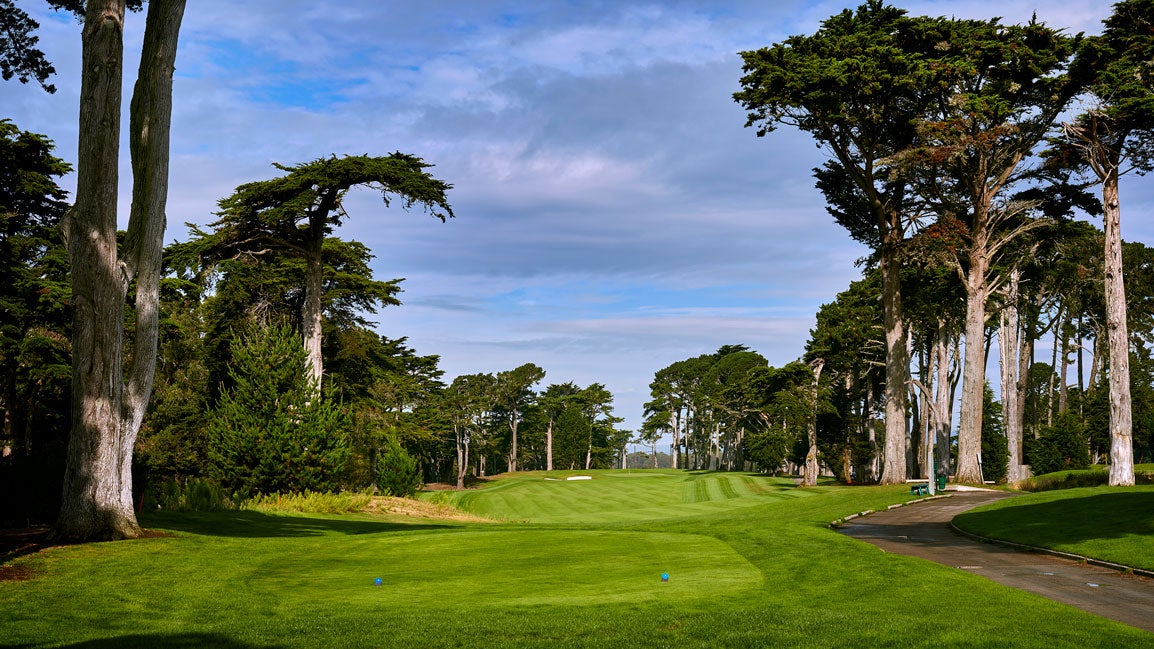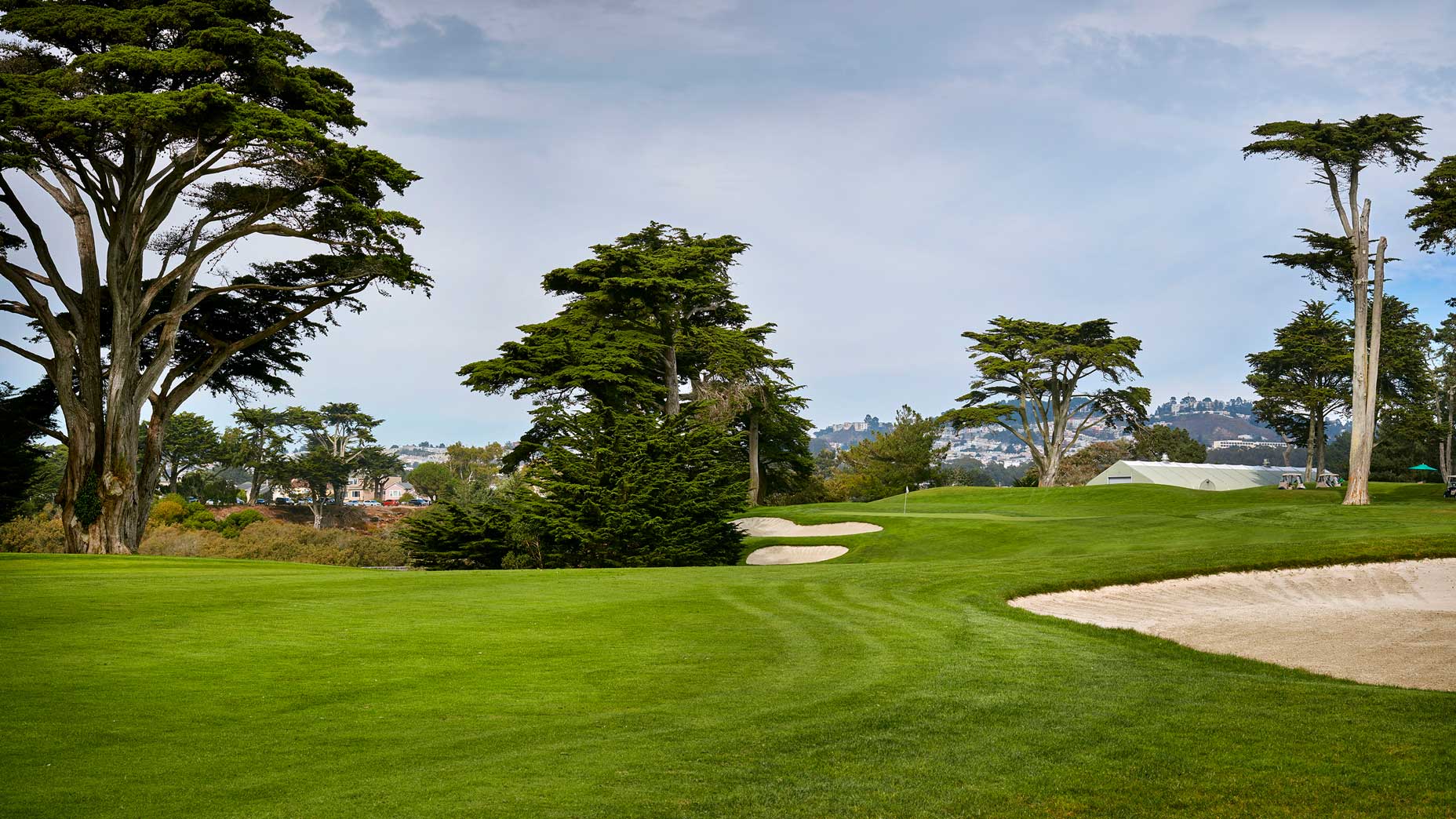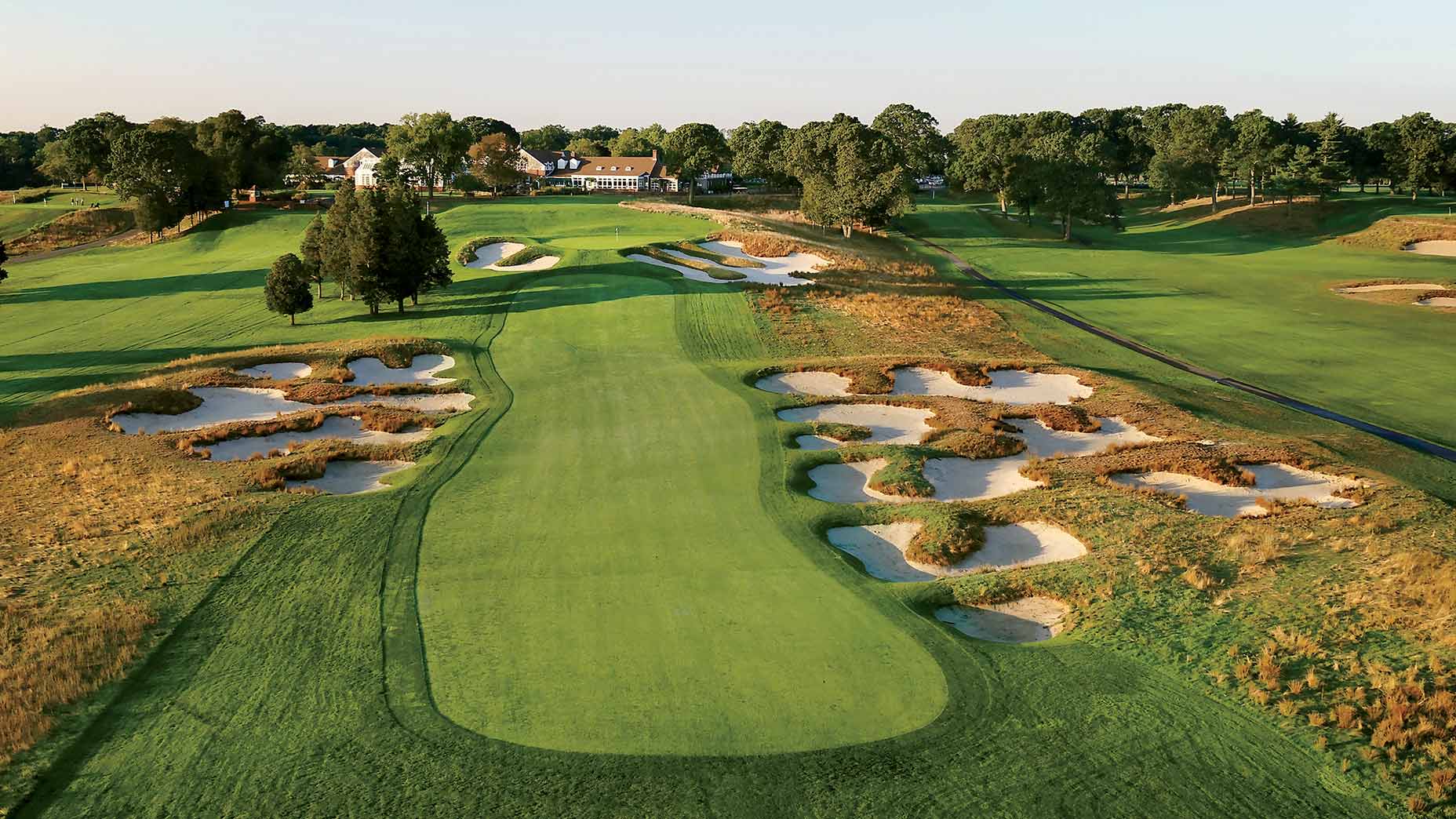GOLF’s Top 100 course panelists are among the most respected and well-traveled course evaluators in the game. They’re also keen to share their opinions. In this GOLF.com series, we’ll unlock their unvarnished views on all questions course-related. The goal is not only to entertain you but also to give you a better understanding of how to understand and appreciate golf course architecture. You can see GOLF’s latest Top 100 Courses in the World ranking here, and meet all of our Top 100 panelists here.
The first major of the year, the PGA Championship, is upon us, and it’s taking place at a muni, TPC Harding Park, in San Francisco. Help viewers from home get a handle on a layout that they could play some day in their future.
Two other noted munis that have staged majors — Bethpage Black and Torrey Pines — are known for their difficulty. How does Harding Park compare? Under these tournament conditions — tight fairways, long rough, 7,251 yards, par-70, etc. — what would scratch and bogey golfers shoot?
Josh Sens (panelist since 2013; has played 68 of the World Top 100): Harding is not as tough as either Bethpage Black or Torrey, in my opinion, though the heavy air in the San Francisco fogbelt can make it play a lot longer than it measures. And the greens, though they don’t have a crazy amount of movement to them, can be maddeningly tough to read. That’s under ordinary conditions. I live in the area and walked the course this week to check out the setup. Fairways are pinched. Rough is up. Playing it down from the tips and putting out everything, I would think a scratch golfer would shoot in the 80s if they played well, with things getting exponentially harder for higher handicaps. A bogey golfer would not break 100 and could come in a fair amount higher than that.
Noel Freeman (panelist since 2010; has played 81 of the World Top 100): This is a tough slog for most golfers. I’d say a scratch golfer would shoot in the mid-80s with this setup for the PGA. A bogey golfer would not break 100. I base this upon a former client of mine who played Torrey Pines for a magazine promotion after the U.S. Open was there. He’s a scratch golfer and shot in the upper 90s. The nice thing about Harding is you won’t lose your ball, but I’d agree that Bethpage and Torrey are one iteration more difficult than Harding — mainly due to the rolling landforms (Bethpage built over terminal moraine of the last glacial period and Torrey into the seaside cliffs).
Thomas Brown (panelist since 2015; has played 95 of the World Top 100): Before Kerry Haigh added five new back tees, Harding Park had a 74.3 rating with a 129 slope. Add five to 10 shots for the higher rough, faster greens, hole locations in corners. Add another five shots for nerves. No lost balls for the scratch-quality player at Harding — I think the scratch breaks 90. From Jon Rahm’s comments after his Muirfield Village victory, he has less confidence in the amateur game. The 18 handicap, with no lost balls — not sure they break 100 at Harding Park.

Harding often gets praise for its closing stretch along Lake Merced. In your opinion, how do those holes rank among some of the other finer stretches in municipal golf?
Sens: Holes 13-17 represent the strongest part of the course for sure. The terrain has more lilt than anything on the front side; the views open up to Lake Merced, and you feel more of the Pacific winds (otherwise, it can be easy to forget you’re playing so close to the Pacific). I don’t think it’s as strong as some stretches at Bethpage Black (holes 4 and 5 are the meat of a great little run there) but I do think it’s every bit as good as what you get at the Olympic Club, which happens to be in view as you come down the home stretch at Harding.
Freeman: There are much better stretches of municipal golf and Bethpage Nos. 4-7 would be one in particular that I would highlight. Chambers Bay also has a great stretch on the back from Nos. 13-17.
Brown: Cape Breton Highland Links in Nova Scotia, Canada. If allowed to tweak the question to recognize Bethpage as a State Park and also recognize National Parks, then the best candidate is found in a Canadian National Park on its eastern seaboard. Highland Links was built in the 1930s by Canada’s most accomplished golf architect, Stanley Thompson. The finish is spectacular, starting with the 540-yard 15th hole as it crests the hill to give a spectacular view of North Bay Ingonish. Pair Highland Links with a visit to the two courses at Cabot Links (including its newly opened par-3 course The Nest) and you have an interesting golf trip.

Why should golfers make a trip to play Harding Park?
Sens: Since its renovation and transformation into a TPC, Harding doesn’t have the same scrappy atmospherics that it once did. But there’s an up-from-the-bootstraps history that’s worth being aware of. A number of greats honed their games here. Johnny Miller. George Archer. Bob Rosburg. And, probably most famously, Ken Venturi, whose dad used to run the pro shop. So it’s got that going for it. Also, if you’re from out of town, playing Harding gets you out to the western fringes of San Francisco, where most tourists rarely stray. It’s something of a time-capsule of a neighborhood in a city that has otherwise been dramatically altered by the tech boom. The fog. The coastal winds. The giant Cypress trees. Harding has a very distinctive sense of place.
Brown: While most of the country gets through the dog days of summer, a visit to Harding during the same time generally has cool temperatures in the 60s with a light breeze. Enjoy the climate and play the forward tees. The eagle putts we’ll see this week are a fantasy world. The coastal fog and chilly temperatures make the course play long.










